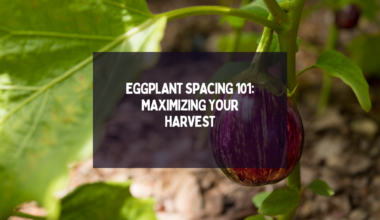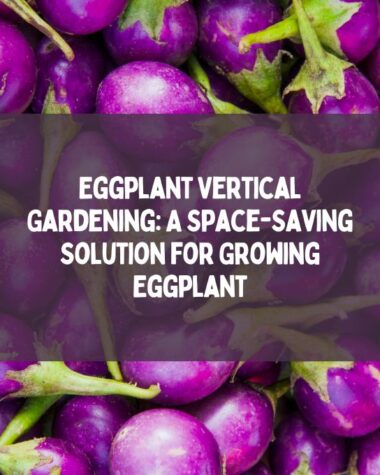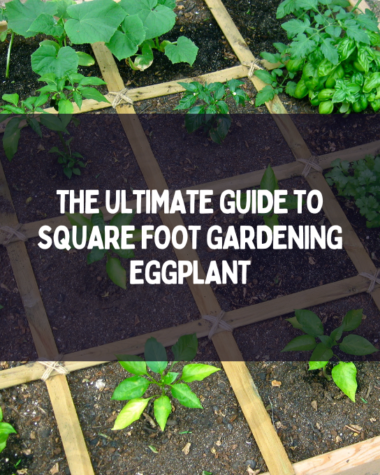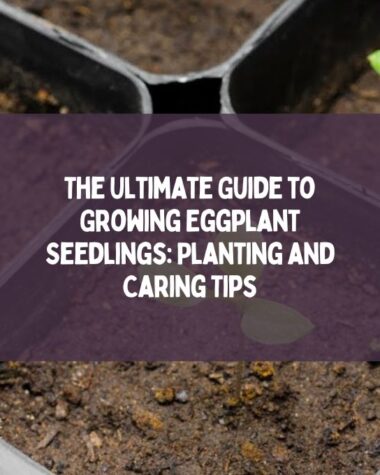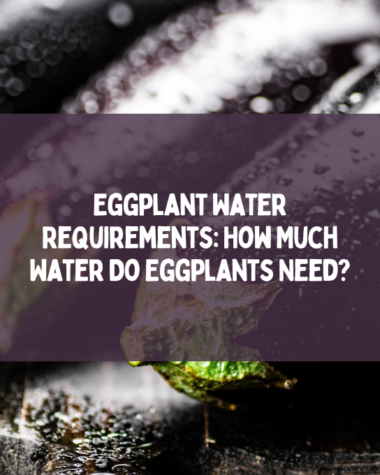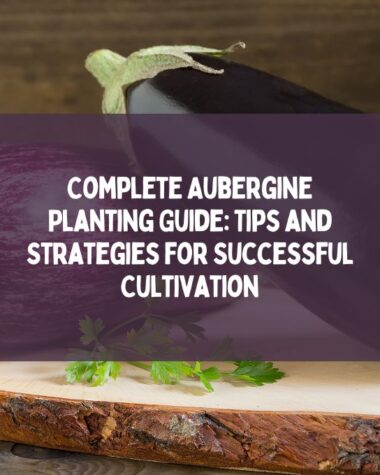Growing eggplant and cucumbers together Companion Planting is a great way to maximize your garden space and harvest various fresh vegetables. These two crops complement each other well regarding soil requirements and growth habits, making them an ideal pairing for small gardens or raised beds.
In this article, I will cover everything you need to know about growing eggplant and cucumber plants together, including planting tips, soil preparation, pest and disease management, and more. Whether you’re a seasoned gardener or just starting, this guide will help you grow a bountiful and healthy crop of eggplant and cucumbers.
Understanding the Companion Plants
Eggplants and cucumbers are warm-season vegetable crops that thrive in full sun and well-drained soil.
Eggplants, also known as aubergines, are members of the nightshade family and are grown for their edible fruit, ranging from deep purple to white. They have a meaty texture and a slightly bitter flavor, often enhanced by cooking.
Eggplants are typically grown annually and can reach heights of 2-3 feet. They require a long growing season and warm soil temperatures to germinate and grow.
Cucumbers are members of the gourd family and are grown for their edible fruit, typically eaten fresh or pickled. They come in various shapes and sizes, from small pickling cucumbers to long English cucumbers.
Cucumbers have high water content and a refreshing, mild flavor. They are also typically grown annually and can reach heights of 1-2 feet. They require warm soil temperatures to germinate and grow.
Both eggplants and cucumbers prefer well-drained soil that is rich in organic matter. They also benefit from regular fertilization and consistent moisture throughout the growing season. Pests and diseases can be challenging for both crops, so monitoring your plants regularly and taking proactive measures to prevent or treat any issues is essential.
Related Read
- Cucumber Companion Planting: What To Grow With Cucumbers And What To Not Grow
- 17 Plants You Can Grow With Carrots As Companions
- What do you understand by companion planting? Some best tomato companions plants
Can Eggplants and Cucumbers Grow Together?
Yes! Eggplants and cucumbers can grow together and are a great example of companion planting. Companion planting is the practice of growing different plants close to one another to benefit both plants.
Cucumber is one of the eggplant Companions that can provide several benefits. For one, they have complementary root systems that help to prevent soil erosion and improve soil structure.
Additionally, the cucumbers can act as a living mulch, shading the soil and conserving moisture for the eggplants. The cucumbers can also help repel pests like cucumber beetles and squash bugs, which can harm eggplants.
When companion planting eggplants and cucumbers, there are a few factors to consider.
- First, ensure you give each plant enough space to grow and mature. Eggplants typically require more space than cucumbers, so consider planting the cucumbers at the base of the eggplant trellis or support.
- Second, be mindful of the different growing requirements of each plant. For example, eggplants require slightly acidic soil, while cucumbers prefer a more neutral pH. Finally, be aware of any potential issues with disease or pests, and take steps to prevent or treat them as needed.
Overall, companion planting eggplants and cucumbers can be a great way to maximize your garden space and improve the health and productivity of both plants.
Best Practices for Growing Eggplants and Cucumbers Together
Here are some best practices for growing eggplants and cucumbers together:
- Soil Requirements and Preparation: Both eggplants and cucumbers prefer well-drained soil rich in organic matter. Before planting, amend the soil with compost or well-rotted manure to improve soil fertility and structure. Eggplants prefer slightly acidic soil with a pH of around 6.0-6.8, while cucumbers prefer a more neutral pH of around 6.5-7.0.
- Sowing Seeds and Transplanting: Eggplants and cucumbers can be started from seed indoors 6-8 weeks before the last frost date in your area. Transplant seedlings into the garden once soil temperatures have warmed to at least 60°F. Eggplants should be spaced 18-24 inches apart in rows 24-36 inches apart, while cucumbers can be spaced 12-18 inches apart in rows 36-60 inches apart.
- Watering and Fertilizing: Both eggplants and cucumbers require consistent moisture throughout the growing season. Water deeply once or twice a week, depending on rainfall and soil moisture levels. To encourage healthy growth and fruit development, fertilize with a balanced fertilizer every 4-6 weeks. Avoid over-fertilizing, as this can lead to excessive vegetative growth at the expense of fruit production.
- Controlling Pests and Diseases: Eggplants and cucumbers can be susceptible to various pests and diseases, including aphids, flea beetles, cucumber beetles, and powdery mildew. To prevent infestations, monitor your plants regularly and take action at the first sign of trouble. This may involve using organic insecticides or fungicides, removing infected leaves or fruits, or practicing good sanitation practices, such as removing fallen leaves and debris from the garden.
- Harvesting: Eggplants are typically ready to harvest 70-80 days after planting when the fruit is glossy and firm to the touch. To avoid damaging the plant, use a sharp knife or pruning shears to cut the fruit from the stem. Cucumbers can be harvested when they reach the desired size and are firm to the touch. Be sure to harvest regularly to encourage continued fruit production.
Following these best practices, you can grow a healthy and productive crop of eggplants and cucumbers in your garden.
Also, Read
- The Ultimate Guide to Growing Eggplant Seedlings: Planting and Caring Tips
- 18 Common Aubergine Growing Problems and Their Solutions
- 16 Different Types of Aubergine You Need to Try
Tips for a Successful Harvest
Here are some tips for a successful harvest of eggplants and cucumbers:
- Signs of Readiness for Harvest: Eggplants are typically ready to harvest when the fruit is glossy and firm to the touch. The skin should be smooth and shiny, and the fruit should feel heavy for its size. Cucumbers are ready to harvest when they reach the desired size and are firm to the touch. Check your plants regularly for ripe fruits, as leaving them on the vine for too long can result in bitterness or tough skin.
- Harvesting Eggplants and Cucumbers: To harvest eggplants, use a sharp knife or pruning shears to cut the fruit from the stem. Be sure to cut the fruit with a short length of stem attached, as this will help to prevent the fruit from spoiling. To harvest cucumbers, gently twist the fruit from the stem or use a sharp knife to cut it off. Be careful not to damage the vine or nearby fruits when harvesting.
- Post-Harvest Care: After harvesting, gently wash the fruits with cool water to remove any dirt or debris. Store eggplants and cucumbers separately in the refrigerator, as they have different ideal storage temperatures. Eggplants should be stored at temperatures between 50-55°F and high humidity, while cucumbers should be stored at temperatures between 45-50°F and low humidity. Be sure to use or preserve your harvest as soon as possible for the best flavor and texture.
By following these tips, you can ensure a successful harvest of eggplants and cucumbers from your garden.
Conclusion
Growing eggplants and cucumbers together can be a rewarding experience for gardeners. These two plants make good companions in the garden, as they have similar growing requirements and can benefit from each other’s presence.
Following the best practices outlined in this guide, such as preparing the soil, sowing seeds, watering and fertilizing, controlling pests and diseases, and harvesting at the right time, you can enjoy a bountiful harvest of delicious eggplants and cucumbers.
Happy Gardening!
